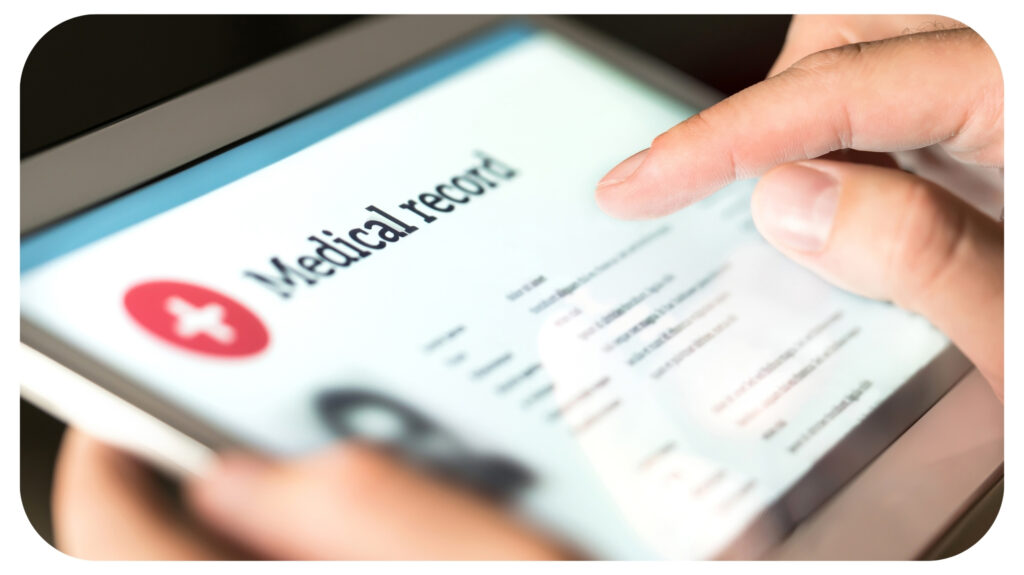The Basics Of Healthcare Interoperability Technology
This post was last updated on April 24th, 2024

In today’s digital world, the healthcare field is quickly adopting new technologies. This helps to make processes smoother, improve care for patients, and make it easier to share data. One crucial part of this technological shift is healthcare interoperability – the ability of different healthcare systems, devices, and applications to seamlessly communicate and exchange information.
But what exactly does healthcare interoperability mean, and why is it so important? Let’s take a closer look.
Contents
ToggleUnderstanding Healthcare Interoperability
So, what is interoperability in healthcare? At its core, incorporating healthcare interoperability solutions means that various healthcare IT systems and software applications can access, exchange, integrate, and cooperatively use data in a coordinated way. It doesn’t matter which application or vendor originally created the data. In simpler terms, it ensures that different healthcare systems can ‘talk’ to each other and share information without any barriers or compatibility issues.
Why Interoperability Matters
Without interoperability healthcare, several challenges can arise:
Fragmented Patient Data
Without a healthcare interoperability solution, patient data may be scattered across various healthcare organizations. This makes it hard for providers to get a complete picture of a patient’s medical history, which can lead to incomplete or inaccurate diagnoses and treatment plans.
Poor Care Coordination
When healthcare information systems can’t communicate well, it becomes difficult to coordinate care among different providers. This can result in delays, duplicated efforts, and errors, ultimately leading to poor patient outcomes and higher healthcare costs.
Higher Costs
Repeated tests, manual data entry, and inefficient workflows due to lack of interoperability can significantly increase healthcare costs, putting a strain on healthcare organizations and patients.
On the other hand, achieving interoperability brings many benefits:
Better Patient Care
With seamless data exchange, healthcare providers can access a patient’s full medical history, including test results, medications, allergies, and previous treatments. This allows for more informed decision-making and personalized care tailored to each patient’s unique needs.
Improved Care Coordination
A healthcare interoperability solution makes it easier for different healthcare providers, such as doctors, nurses, pharmacists, and specialists, to communicate and collaborate. This leads to more coordinated and efficient care delivery, reducing the risk of errors and ensuring a smooth transition of care across different settings.
Cost Savings
By eliminating redundancies, streamlining workflows, and minimizing manual data entry, interoperability can help healthcare organizations save time and resources, ultimately reducing operational costs. This not only benefits healthcare providers but also makes healthcare more accessible and affordable for patients.

The Interoperability Landscape
To achieve interoperability, the healthcare industry uses various standards, frameworks, and technologies:
Standards and Frameworks
Organizations like Health Level Seven (HL7) and Integrating the Healthcare Enterprise (IHE) have developed standards and frameworks to facilitate interoperability. Examples include HL7’s Fast Healthcare Interoperability Resources (FHIR) and IHE’s Integration Profiles. These standards provide guidelines for how data should be structured, formatted, and exchanged between different healthcare IT systems.
Electronic Health Records (EHRs)
EHRs are digital versions of a patient’s medical records designed to store and share information across different healthcare settings. Interoperability between EHR systems is crucial for effective data exchange, ensuring that a patient’s complete medical history is available to healthcare providers, no matter where the patient seeks care.
Health Information Exchanges (HIEs)
HIEs are platforms that allow healthcare providers and organizations to securely share patient data, enabling better coordination of care and improving overall healthcare delivery. These platforms act as intermediaries, facilitating the exchange of data between different healthcare IT systems, regardless of their vendor or platform.
Application Programming Interfaces (APIs)
APIs act as go-betweens, allowing different software applications and systems to communicate and exchange data seamlessly. They provide a standardized way for different systems to interact and share data, making it easier for healthcare organizations to integrate and use multiple applications and services.
Imagine a situation where a patient uses a mobile health app to track their daily steps, calorie intake, and sleep patterns. With interoperable APIs, this data can be seamlessly integrated into the patient’s EHR, giving healthcare providers a more comprehensive picture of the patient’s health and lifestyle.
Challenges and Considerations
While there are many benefits to healthcare interoperability, achieving it is not without challenges. Here are some healthcare interoperability challenges:
Data Security and Privacy
Ensuring the secure exchange of sensitive patient data while following regulations like HIPAA (Health Insurance Portability and Accountability Act) is a critical concern. Healthcare organizations must implement robust security measures, such as encryption, access controls, and auditing, to protect patient privacy and maintain trust in the healthcare system.
Standardization and Adoption
Widespread adoption of healthcare interoperability solutions, standards, and frameworks across the healthcare industry is essential for successful implementation. However, this can be challenging due to the diversity of healthcare IT systems, varying organizational priorities, and the need for cooperation among multiple stakeholders.
Legacy Systems Integration
Many healthcare organizations still rely on older, legacy healthcare IT systems that were not designed with interoperability in mind. Integrating these systems with modern interoperable solutions can be a complex and costly process, requiring careful planning and execution.
Change Management
Implementing interoperability often requires organizational and cultural shifts, which can be challenging for healthcare providers and staff. Effective change management strategies, including training, communication, and stakeholder engagement, are crucial for the successful adoption and meaningful use of interoperable healthcare IT solutions.
The Path Forward
Despite the challenges, the healthcare industry is steadily moving towards greater interoperability. Collaboration among stakeholders, continued development of data interoperability standards and technologies, and a focus on patient-centric care will be instrumental in achieving seamless data exchange and improving overall healthcare delivery.
Government initiatives, such as the 21st Century Cures Act in the United States, are also driving interoperability efforts by promoting the use of certified EHR technology and supporting the development of healthcare interoperability standards and best practices.
Final Thoughts
The vision of a truly interoperable healthcare ecosystem, where patient data flows smoothly across different systems and settings, becomes increasingly attainable. By embracing interoperability, the healthcare industry can unlock new levels of efficiency, quality, and patient-centered care for a more sustainable healthcare system.
Recommended For You
Inpatient Rehabilitation: What You Need to Know
Most Inside
Most Inside offers high-quality recommendations and valuable updates to enhance all aspects of your life, providing premium guidance and enriching experiences.




